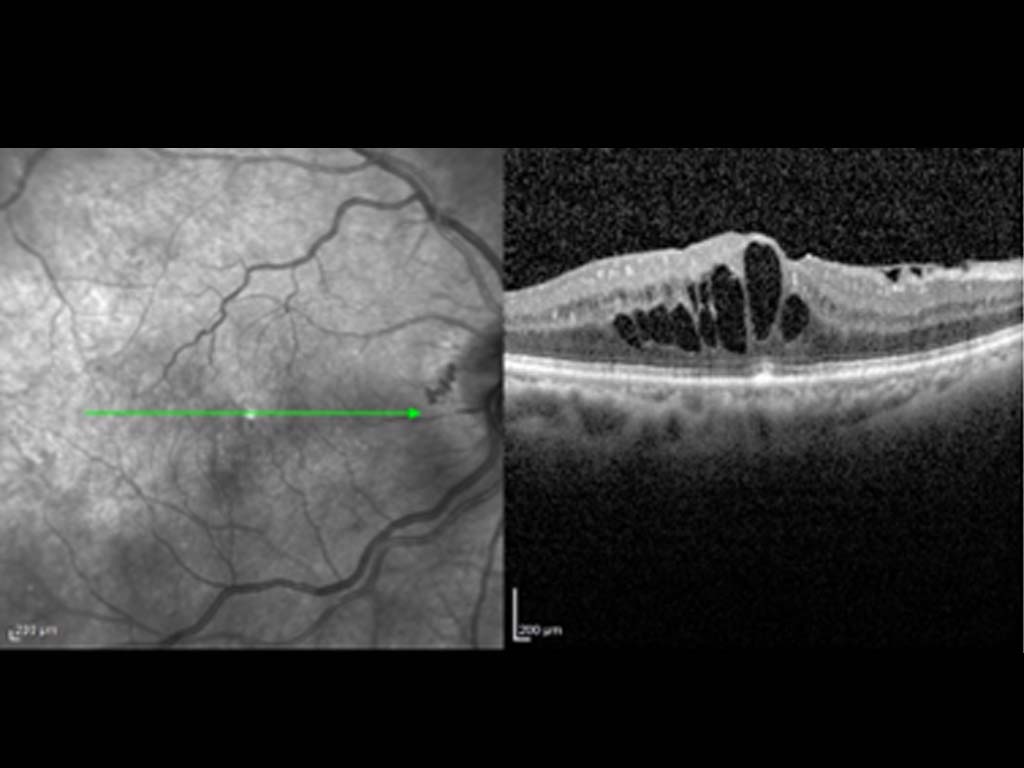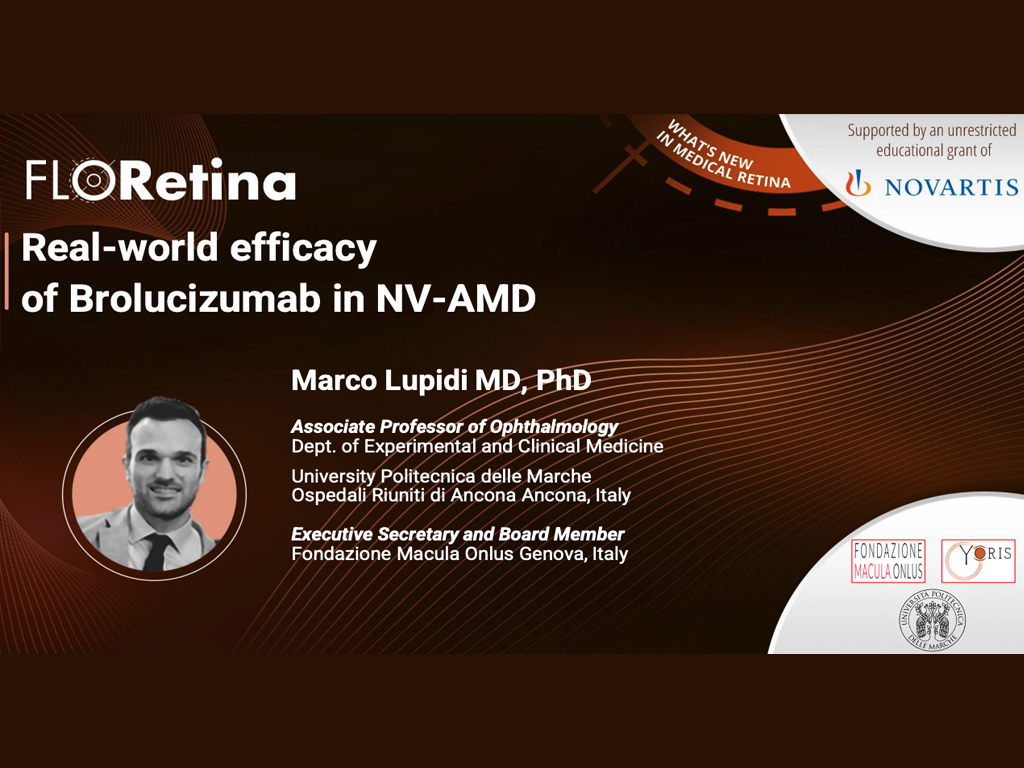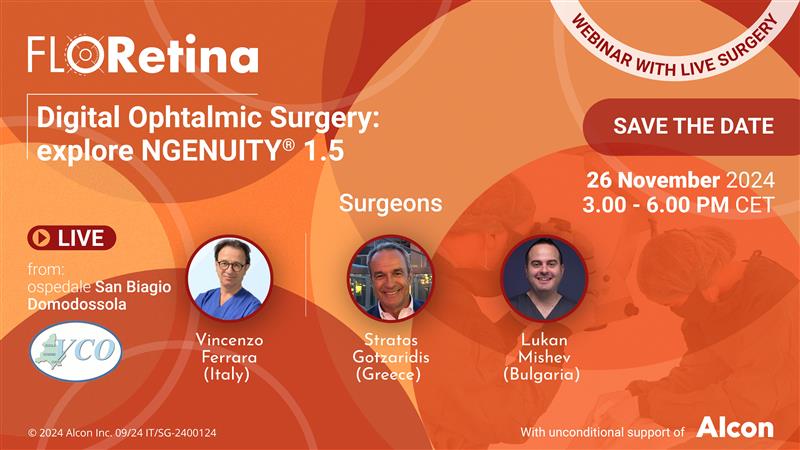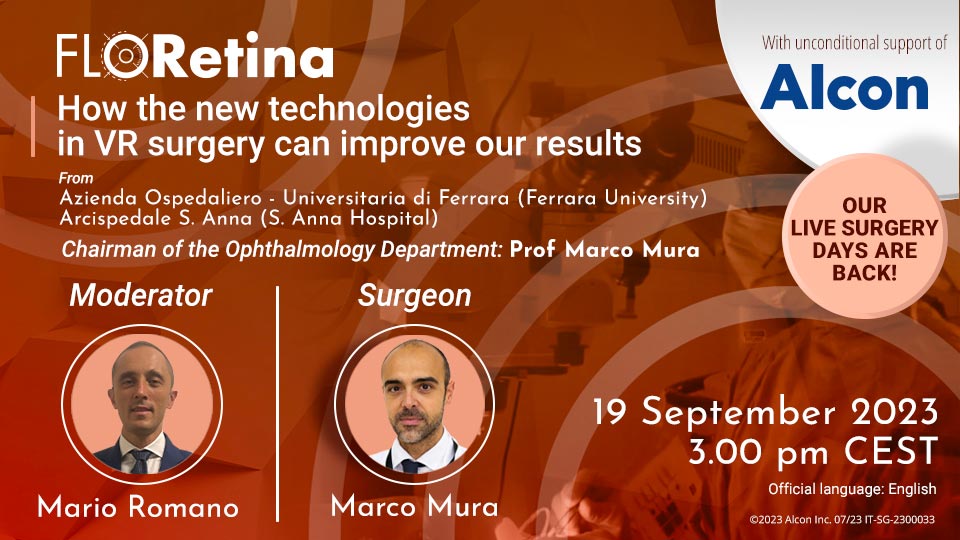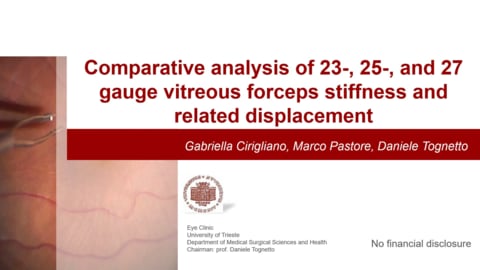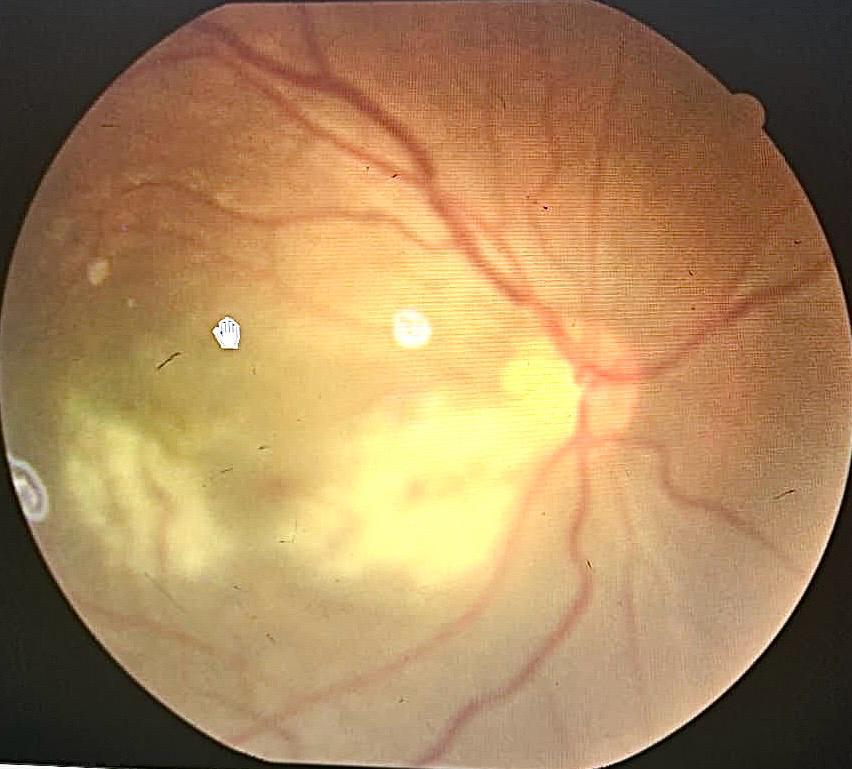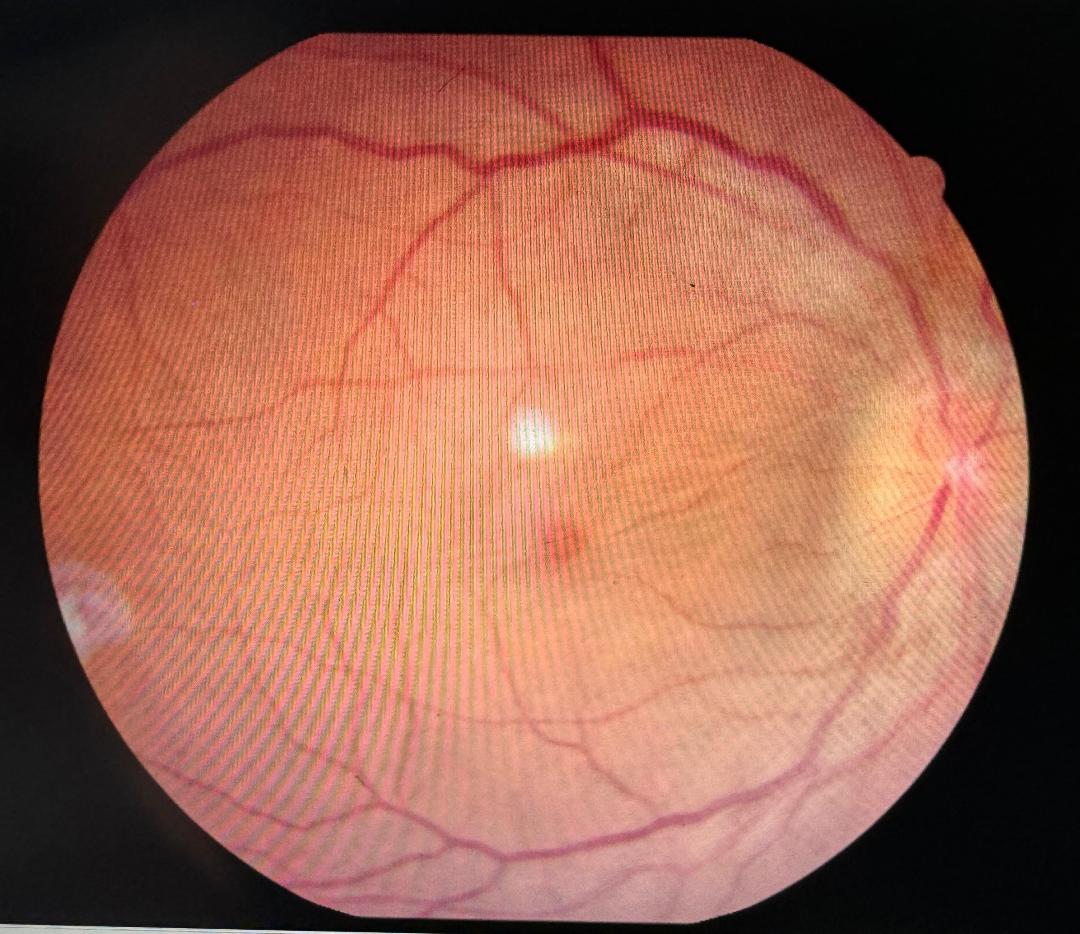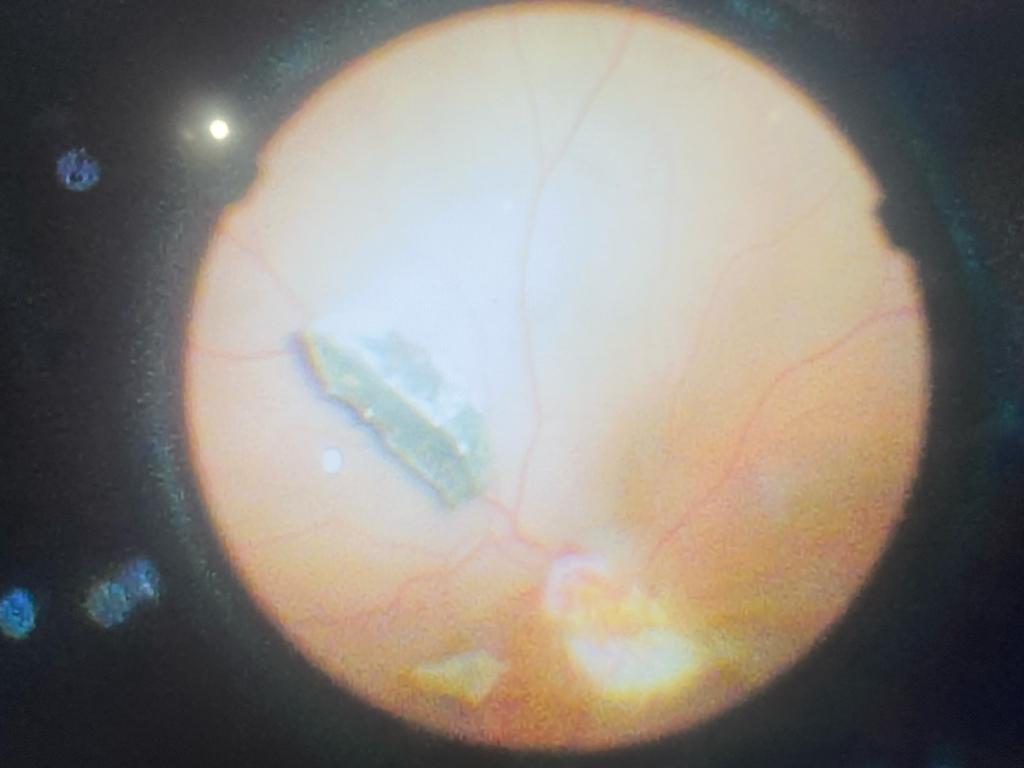Congress
Information
-
December 04 - December 07, 2025
-
Florence, Fortezza da Basso
-
For info: secretariat@floretina.com
Congress Website ROP Congress 2025
Webinars, live surgeries and events
Floretina Live
Floretina.com offers a number of live webinars on different topics throughout the year. They are
traditionally planned on Tuesday, at 6.30pm CET/CEST, but if that does not fit with your time
zone, you can always watch the webcast at any time, as we record all sessions and upload them in
the Webinars Archive.
Next events
Past events
Past
surgeries
Focus on
MYOPIA AND RELATED COMPLICATIONS
The incidence in the world of nearsightedness is on the rise. The association with other ocular diseases and the impact of myopia complications are quite frequent. Discover our new section with lessons on medical and surgical topics, webinars on new treatment opportunities.
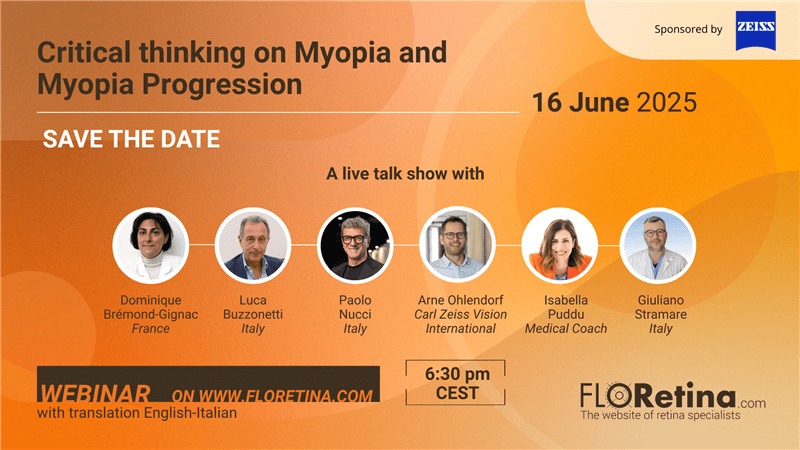
June 16, 2025, 6.30 PM CEST
Critical thinking on Myopia and Myopia Progression
Faculty: Dominique Brémond-Gignac, Luca Buzzonetti, Paolo Nucci, Arne Ohlendorf, Isabella Puddu, Giuliano Stramare

Video presentation
Surf the presentations on myopia associated diseases held during FLORetina-ICOOR 2024.
Watch now
Video presentation
Surf the presentations on myopia associated diseases held during FLORetina-ICOOR 2023.
Watch now
Breaking news
Hot topics from editors
The editorial team* at Floretina.com is committed to select the news of the month. We
will interview established physicians, as well as young ophthalmologists, scientific advisors
and Industry representatives. Register on the website to receive news notifications!
*Timothy Norris has been working for ten years in medical communication in
the field of ophthalmology. He regularly collaborates as journalist, medical writer and
copywriter with influential newspapers and specialised agencies, including Ocular
Surgery News, Eyeworld, Retina Today and Media Mice. He is currently working for the
media agency Etcetera Communication.
Superior Efficiency in Action: Surgeons Share Their Experience with Alcon Unity VCS
Dec 03, 2025Alcon, the global leader in eye care, will showcase its latest innovation for cataract and vitreoretinal surgery at the FLORetina-ICOOR 2025 Congress in Florence, Italy, December 4-7. Floretina delegates are invited to attend live surgery sessions and visit the Alcon booth to find out more about UNITY® VCS, a versatile platform that offers two configurations: the combined Vitreoretinal Cataract System (VCS) and the standalone Cataract System (CS). Read more
Science Corp.’s PRIMA Retinal Implant Restores Functional Central Vision to Patients with Geographic Atrophy Caused By Age-Related Macular Degeneration, a Leading Cause of Blindness, The New England Journal of Medicine Reports
Nov 25, 2025The New England Journal of Medicine (NEJM) recently published a peer-reviewed original paper with the results of a landmark clinical trial demonstrating the efficacy of Science Corporation’s PRIMA brain-computer interface (BCI) retinal implant. The paper showed that PRIMA restored functional central vision to patients suffering from geographic atrophy (GA) due to age-related macular degeneration (AMD), a leading cause of blindness affecting more than 5 million people worldwide. Read more
Floretina-Icoor
Scientific news

Editorials
Diabetic macular edema: OCT retinal biomarkers as predictive factors of treatment response and long-term visual outcome
Diabetic retinopathy (DR) is the leading cause of blindness in working-aged people worldwide[1]. Diabetic macular edema (DME) occurs in nearly 12% of patients with DR and represents a frequent complication of diabetes resulting from disruption of blood-retinal barrier and accumulation of fluid in the retina, which can lead to significant central visual loss if left untreated[2]. Read more
Floretina
Videolibrary
This section features the video recordings of
- the live surgery sessions held during the past editions of Floretina Meetings
- the live surgery sessions webcasted from a specific Centre
Search video
Live surgery from meetings
Live surgery from streaming
Floretina.com will be also happy to publish surgical videos submitted by users:
we welcome you to upload yours
Send your videoFloretina
Lecture from past meetings
Search Lecture

The repository of retina images
Image bank
We welcome professionals, researchers, industry contributors who are registered on Floretina.com to upload and share their diagrams and figures illustrating retinal anatomy or clinical techniques, case series, and ultrasound images. Please read our terms of use and upload your picture.
View the image banks Send your image banksSearch image bank
Rickettsial retinitis
Rickettsial infections are caused by a variety of obligate intracellular, Gram-negative bacteria. Ocular involvement is common but often asymptomatic. All ocular structures can be involved, but posterior segment involvement is more common and most severe. Common posterior segment manifestations are inner retinitis with associated vasculitis and mild vitritis. There are various speculations regarding the pathogenesis of rickettsial retinitis. The cotton wool spot-like retinal lesions could result from intraretinal multiplication of organisms or alternatively due to immune complex deposition along retinal vessels.
VIEW IMAGE BANKLetrozole-induced unilateral acute intermediate uveitis with cystoid macular edema
A case of 48 y/o lady who presented with DOV in RE (6/60) since 15 days. She had a h/o Ca right breast treated with mastectomy 13 years back & was prescribed letrozole(AROMATASE INHIBITOR) 2.5mg OD as she had tested ER +ve. Anterior segment showed cells in AC & anterior vitreous face. Posterior segment revealed disc & macular edema. OCT also showed disc edema & CME. LE examination was WNL. Systemic investigations were WNL. She was asked to stop letrozole after oncology consultation & was prescribed topical prednisolone & nepafenac. Discontinuation of letrozole improved visual acuity to 6/18 within 1 month.
VIEW IMAGE BANKRetained iofb presenting as vitreous haemorrhage
Patient presented with dimunition of vision in right eye,on evaluation patient had re- vitreous haemorrhage,on imaging iofb noted. Planned ppv and metallic iofb removed with the help of maxgrip forceps, through port widening,procedure uneventfull
VIEW IMAGE BANK
Young ophthalmologists retinal imaging society
Clinical cases
Clinical case of the month
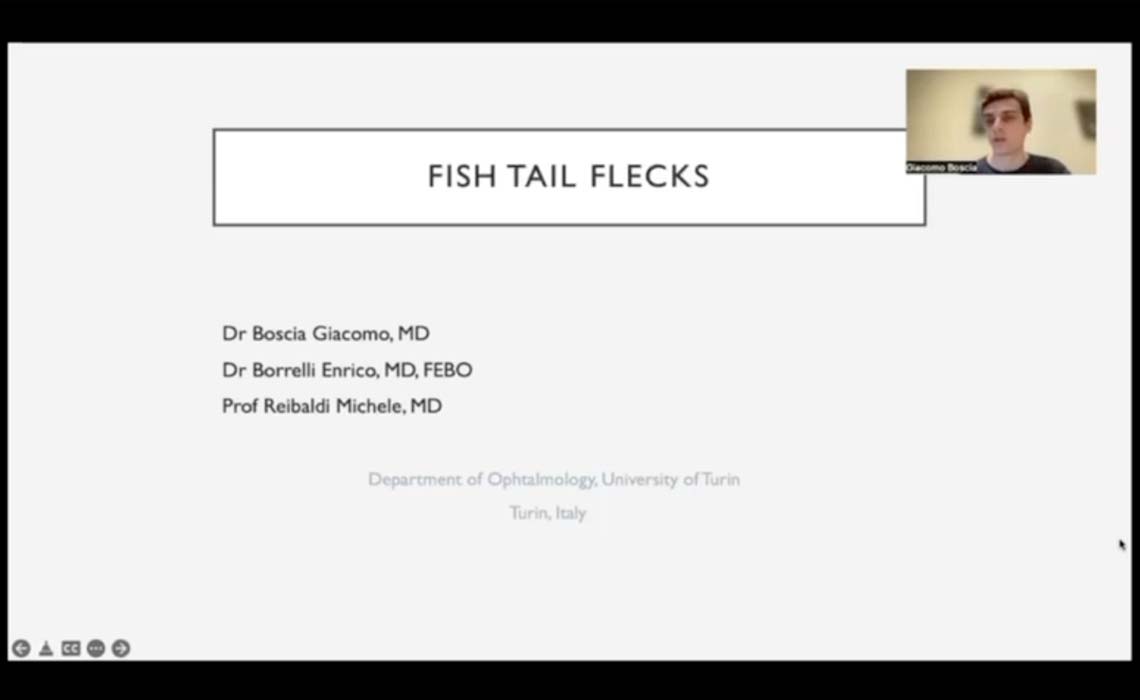
Fish Tail flecks
A 55-year-old male patient was referred to our medical retina unit for bilateral vision loss occurred in the last year. Fundus examination revealed bilateral macular atrophy with foveal sparing surrounded by yellowish ‘fish tail flecks’ all over the posterior pole. SD-OCT, FAF, FA and ERG were performed. Genetic evaluation confirmed diagnosis of Stargardt Disease.
Read more


















 and enlarged to show detail (right).png)
